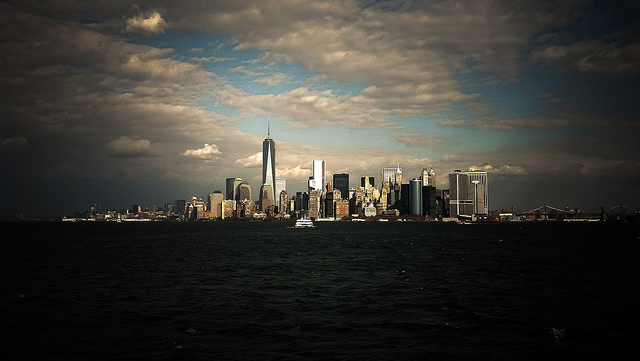Every September, many of the world’s presidents, prime ministers, and foreign ministers descend on New York City for a few days. They come to mark the start of the annual session of the United Nations General Assembly, to give speeches that tend to receive more attention at home than they do in the hall, and—in the diplomatic equivalent of speed dating—to pack as many meetings as is humanly possible into their schedules.
There is also a tradition of designating a specific issue or problem for special attention, and this year will be no exception. September 19 will be devoted to discussing the plight of refugees (as well as migrants) and what more can and should be done to help them.
It is a good choice, as there are now an estimated 21 million refugees in the world. Originally defined as those who leave their countries because of fear of persecution, refugees now also include those forced to cross borders because of conflict and violence. This number is up sharply from just five years ago, owing primarily to chaos across the Middle East, with Syria alone the source of nearly one in every four refugees in the world today.
The attention of the UN and its member states does not reflect only the increase in numbers or heightened humanitarian concern over the suffering of the men, women, and children who have been forced to leave their homes and their countries. It also stems from the impact of the flow of refugees on destination countries, where it has upended politics in one country after another.
In Europe, the rise of political opposition to German Chancellor Angela Merkel, the Brexit vote, and the growing appeal of nationalist parties on the right can all be attributed to real and imagined fears stemming from refugees. The economic and social burden on countries such as Jordan, Turkey, Lebanon, and Pakistan, all of which are being asked to house large numbers of refugees, is immense. There are also security concerns about whether some of the refugees are actual or potential terrorists.
In principle, there are four ways to do something meaningful about the refugee problem. The first and most fundamental is to take steps to ensure that people need not flee their countries or, if they have, to create conditions that permit them to return home.
But this would require that countries do more to end the fighting in places like Syria. Alas, there is no consensus on what this would require, and even where some agreement exists, sufficient will to commit the required military and economic resources does not. The result is that the number of refugees in the world will grow.
The second way to help refugees is to ensure their safety and wellbeing. Refugees are particularly vulnerable when they are on the move. And after they arrive, many fundamental needs—including health, education, and physical safety—must be met. Here, the challenge for host states is to guarantee adequate provision of essential services.
A third component of any comprehensive approach to refugees involves allocating economic resources to help deal with the burden. The United States and Europe (both European Union member governments and the EU itself) are the largest contributors to the UN High Commission on Refugees, but many other governments are unwilling to commit their fair share. They ought to be named and shamed.
The final aspect of any refugee program involves finding places for them to go. The political reality, though, is that most governments are unwilling to commit to take in any specific number or percentage of the world’s refugees. Again, those who do their fair share (or more) should be singled out for praise—and those who do not for criticism.
All of which brings us back to New York City. Sadly, there is little reason to be optimistic. The 22-page draft ‘outcome document’ to be voted on at the September 19 High Level meeting—long on generalities and principles and short on specifics and policy—would do little, if anything, to improve refugees’ lot. A meeting scheduled for the next day, to be hosted by US President Barack Obama, may accomplish something on the funding side, but little else.
The refugee issue provides yet another glaring example of the gap between what needs to be done to meet a global challenge and what the world is prepared to do. Alas, the same holds true for most such challenges, from terrorism and climate change to weapons proliferation and public health.
We can expect to hear a lot of talk in New York next month about the international community’s responsibility to do more to help existing refugees and address the conditions driving them to flee their homelands. But the cold truth is that there is little ‘community’ at the international level. So long as that remains the case, millions of men, women, and children will face a dangerous present and a future of little prospect.


